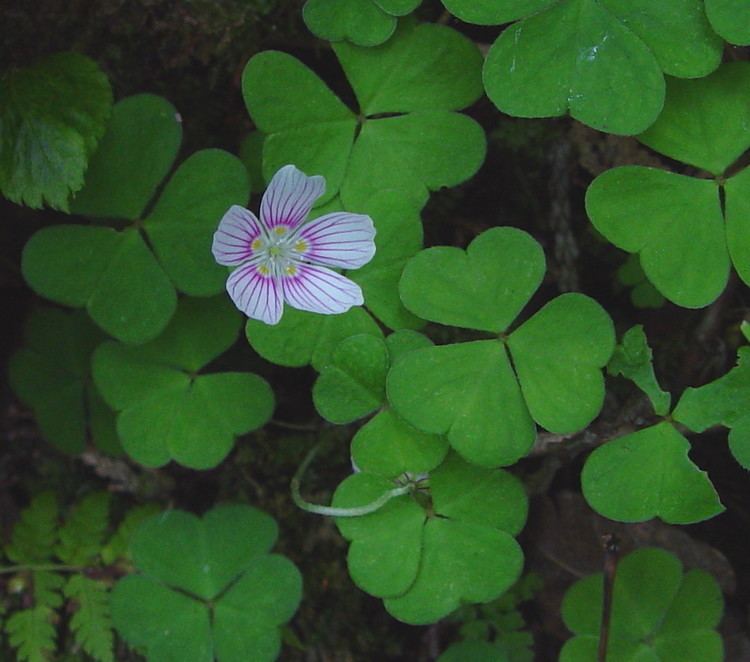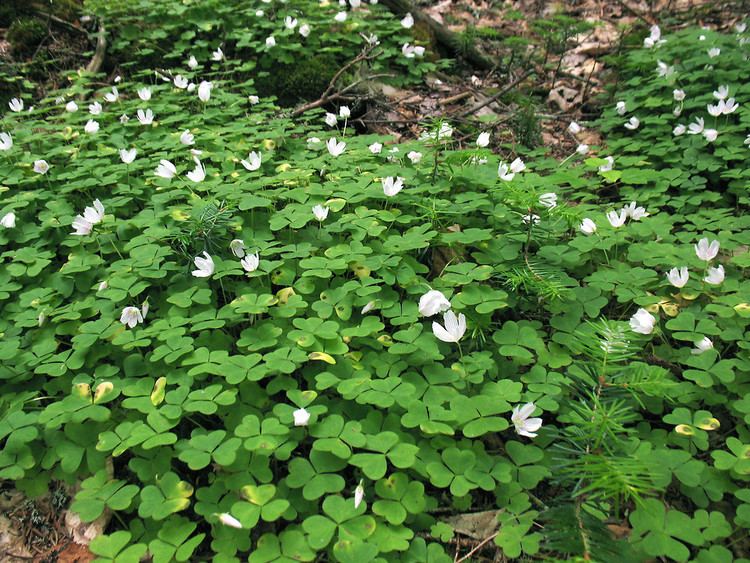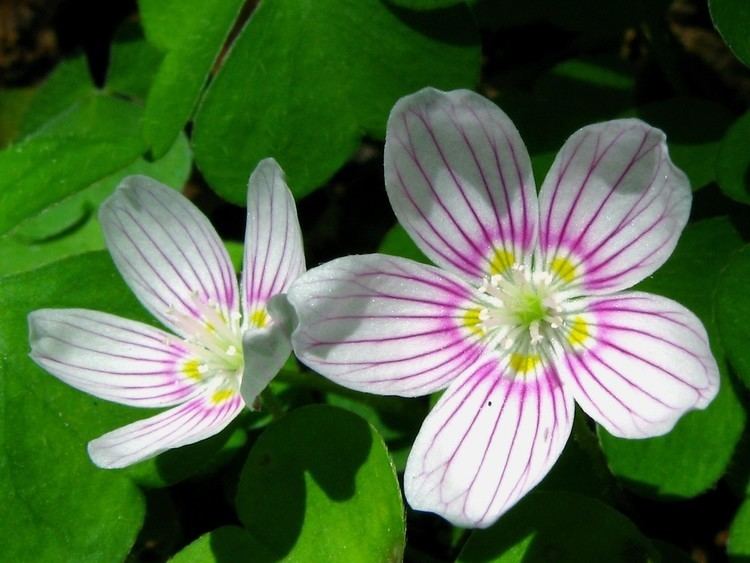Rank Species | Genus Oxalis Higher classification Wood sorrels | |
 | ||
Similar Wood sorrels, Oxalidaceae, Clintonia borealis, Maianthemum canadense, Oxalis violacea | ||
Oxalis montana is a species of flowering plant in the Oxalidaceae family known by the common names mountain woodsorrel, wood shamrock, sours and white woodsorrel. It may also be called common woodsorrel, though this name also applies to its close relative, Oxalis acetosella.
Contents

This species is native to eastern North America, including eastern Canada and the north-central and eastern United States, and Appalachian Mountains.

Description

Oxalis montana is a perennial herb which grows in patches connected by subterranean rhizomes. There are no stems, just clumps of leaves growing to about 10 centimetres (3.9 inches) in maximum height.

The leaves are each made up of three heart-shaped leaflets. The leaflets move, folding and unfolding, in response to sunlight.

There are two types of flowers, blooms that open and cleistogamous flowers that remain closed and self-pollinate. The flower color is variable. Environmental factors may cause variation; flowers growing at higher elevations have less color in the veins on the petals, while the veins of those at lower elevations have a deeper pink-purple coloration.

The fruit is a capsule. The plant reproduces sexually by seed and asexually by sprouting large colonies from the rhizome. Some populations produce no flowers in a given season and reproduce only vegetatively.
Ecology
This plant is a climax species, occurring in mature forests and tolerant of shade. It is a dominant herb in a number of ecosystems, such as the forests of the Appalachian Mountains. It occurs there in the understory of red spruce (Picea rubens) and balsam or Fraser fir (Abies balsamea or A. fraseri).
It is also dominant in northern hardwood forest habitat and its ecotones, in the understory of red or sugar maple (Acer rubrum or A. saccharum), yellow birch (Betula lutea), and American beech (Fagus grandifolia). Other dominant understory species growing with it include false lily-of-the-valley (Maianthemum canadense), goldthread (Coptis groenlandica), starflower (Trientalis borealis), and woodferns (Dryopteris spp.).
This plant's extensive root network helps it stabilize the soil. It can grow on flat ground or steep slopes. The climate is often cool and moist, with high humidity and precipitation, including fog drip, and areas of long-lasting snowpack. Wildfire is uncommon.
